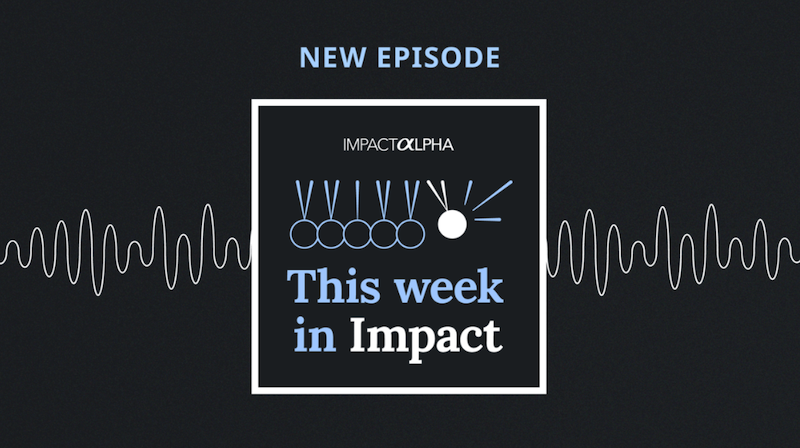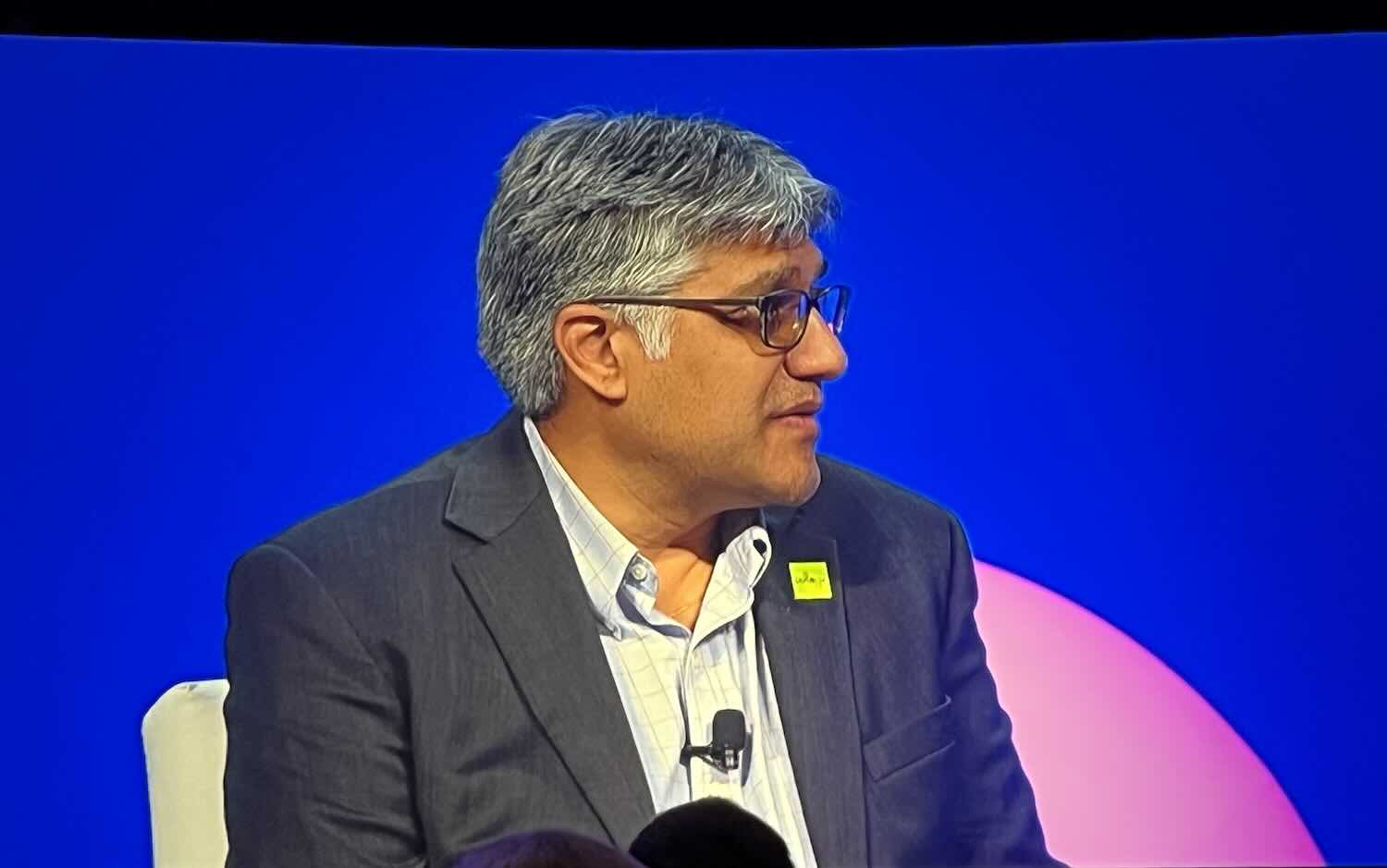‘Incentivizing impact’ is the third in a series of posts by Aunnie Patton Power that examine how to redesign impact financing to work for funders, founders and communities. Read ‘redesigning venture finance’ and ‘committing to communities’.
To get a different outcome, change the rules of the game.
I often open up my courses stating that I fundamentally believe no one does anything out of the goodness of their hearts and that students will need to assume that as well, while in my course. It is a purposely provocative statement that is intended to move impact investing students beyond what they think enterprises and funders “should” do towards understanding incentives that do or do not exist. The real question is: what are enterprises and funders incentivized to do?
Many impact investing funds and deals simply replicate the financially focused incentives of traditional debt and equity. The new IFC principles for impact management go a long way towards clarifying which funds are adopting impact investing best practices. But if we want to ensure that the best practices continue to drive real impact, impact investing deals and funds must begin to break from a financial-only focus of the traditional financial system, and do it in a contractual way.
The New Alternatives: Holding Companies that Build Assets and Impact of ‘Infinite Duration’
There are two types of impact milestones in impact investing: those that are aligned to financial performance and those that require a trade-off to create deep impact. Both finance-first and impact-first investors can utilize these two different types of milestones, but they require different strategies.
Rewarding impact
Both finance-first and impact-first investors can use aligned milestones in a way consistent with their investment objectives to drive financial returns as well as impact. To demonstrate this, let’s use an example from 60 Decibels recently released “Off-Grid Energy” report. The report, which is based on 35,000 interviews of 49 off-grid energy companies’ customers, found that 34% of off-grid energy users have difficulty with their products.
“This results in customer frustration, and it means that the full impact potential of these products is not being realised,” the report finds. “Since most sales come via word-of mouth, poor customer experience negatively affects both the top and bottom lines.”
New Revivalists are using these six strategies to revive entrepreneurship and the American Dream
In this case, impact and financial goals are inexorably intertwined, or aligned. Companies that offer higher quality products and better customer service should therefore see both greater impact and higher revenues. With enough data, investors should be able to build new risk models that show the reduction of risk from integrating these aligned milestones.
At the deal level, this could include integrating impact milestones in the form of tranching (releasing tranches of capital) or vesting (releasing ownership of shares) or equity buyback options (reselling ownership to an entrepreneur). Failure to reach impact milestones could also be used to trigger a facilitated exit for an investor or a default. In the Off-Grid example, milestones could include incentivizing entrepreneurs to increase the quality of their product and the level of customer service provided.
At the fund level, responsible reward, which links remuneration to environmental, social and governance metrics, is a growing trend for investment managers. Investors into funds see the value of linking ESG performance to employee incentives to drive sustainable returns.
Impact Carry: A carrot-based approach to boosting the impact of impact investments
Impact carry, which links fund managers’ percentage of profits to impact achievements, is another option. MDIF’s Emerging Media Opportunity Fund uses five impact factors to determine its carry. How each investment scores on those factors determines how much profit MDIF receives. This approach isn’t yet widely adopted by the impact investing community. Likely less than 5% of impact funds use this structure. To work for commercial investors, impact carry needs to be linked to aligned milestones that drive financial returns.
Impact-linked finance
Impact-first investors that can be flexible with losses (or reduced returns) can incentivize deeper impact with interest rate rebates and margin stepdowns. These encourage entrepreneurs and businesses to prioritize impact in the short-term or focus on lowering costs for their customers and end users.
Let’s look at another example from 60 Decibels’ “Off-Grid Energy” report. As off-grid energy companies grow, they tend to move upmarket and focus less on the poor, the study finds. “Importantly, these bigger companies may still reach larger absolute numbers of low-income customers,” 60 Decibels states. “But we think responsible investors, and governments looking to utilise subsidy, should be attentive to this trend so that the most vulnerable, hardest-to-serve customers are not left in the dark.”
Impact Carry: A carrot-based approach to boosting the impact of impact investments
Subsidies, which 60 Decibels mentions, are one well-known type of financial trade-off, but they’re not the only option. The Michael and Susan Dell Foundation use interest rate rebates in some investments in its India portfolio. The first deal the Dell Foundation completed was with the Indian School Financing Company, a lender for affordable private schools. In its loan to the company, the Dell Foundation accepted terms that would allow the firm to reduce interest rates to borrower schools if they achieved certain student performance milestones. That reduction in interest rate would be borne by the foundation.
The Dell Foundation’s thinking was that in the long run, focusing on education quality could improve affordable schools’ bottom-line by helping them retain quality teachers and recruit students. As an impact-first debt provider, the foundation was willing to reduce its financial return on investment to drive this quality in the short-term.
Impact-linked financial rewards help high-impact companies attract growth capital
The Global Innovation Fund regularly uses impact milestones in their deal tranching to encourage impact performance by splitting their investment into tranches based on the achievement of pre-agreed impact goals. They also use impact milestones to price their capital, agreeing to margin stepdowns, or a reduction in return, based on achievements. Sometimes they also include the option of forcing a facilitated exit if a portfolio company consistently fails to meet impact milestones.
Structuring deep impact trade-off milestones requires an external outcome payer who is willing to pay for the trade-off (i.e. the delta). Outcomes linked loans, such as a social impact incentive (SIINC) are an example of this strategy.
In Mexico, a SIINC designed by Roots of Impact encourages specialized diabetes provider Clínicas del Azúcar to double its number of patients from the poorest segments of society by offering them a “bonus payment” based on the number of low-income patients Clínicas del Azúcar treated and the reduction in their average blood sugar (HbA1c levels). Like the off-grid energy example above, the SIINC was designed to ensure that Clínicas didn’t shift its focus upmarket at the expense of poor patients as it grew. The Swiss Agency for Development and Cooperation agreed to make the impact-linked outcomes payments, which allowed institutional impact investors to invest into Clínicas del Azúcar on commercial terms while ensuring that Clínicas was financially incentivized to create the impact that both the company and the investors were seeking.
In South Africa, my Bertha Centre colleagues and I developed a Green Outcomes Fund (GOF) that operates similarly to a SIINC, but at a fund level. Participating fund managers commit to investing their own capital into green enterprises in order to achieve predetermined social and environmental outcomes as well as a financial return. As they hit milestones, they can claim payment from GOF, which is funded by a mix of public and private grant capital. These outcome payments amount to a “top-up” payment because they are much smaller than the overall investments. But what we’ve seen is that the fund managers are building new integrated valuation models for potential investments that look at the projected cash flow from the business and also the projected cash flow from the outcome payments–similar to carbon credit models. This allows them to invest in companies that previously would not have hit their internal hurdle rates.
Monetizing impact to finance green small businesses in South Africa
Outcomes-linked loans allow outcome funders to leverage their capital to pay for a portion of the cost of impact. They are distinct from social impact bonds and development impact bonds, where the full cost of outcomes are borne by the funder.
Data driven
More traditional blended finance strategies, such as first-loss tranches, guarantees and technical assistance facilities have historically been used to push funds towards deeper impact, but have often lacked clarity around the milestones required to access this funding, although this may be changing. For example, the David and Lucile Packard Foundation created a $10 million equity impact tranche in New Forests’ $300 million fund, wherein investors in that tranche will receive half the rate of return of commercial investors if the fund achieves certain social and environmental outcomes.
Ecotrust Forest: Making the math work for sustainable timber in the northwest
Better data will be key to designing appropriate impact incentives and accelerating their adoption. Root Capital has been a leader in this space by sharing data from its portfolio. In “Toward the Efficient Impact Frontier,” Root walks through the data analysis process to understand the effect of “additionality” and social impact on their borrowers’ performance. The fund manager finds that that projected social and environmental impact is aligned to financial performance, whereas additionality, or getting money to those less likely to qualify for it from other sources, requires a deep impact trade-off. This allows Root, as a blended-finance fund, to offer its investors a choice of linking their investment to either aligned impact or deep impact trade-off milestones.
For impact investing to “mainstream” (as we’ve been talking about on conference panels for years), there needs to be greater clarity around how impact achievements are being incentivized within funds and deals.
Aunnie Patton Power is a university lecturer on Impact Finance, an advisor and an angel investor. She is the convenor for the “Impact Investing in Africa Course,” which will be held virtually from September 14th – October 9th.












